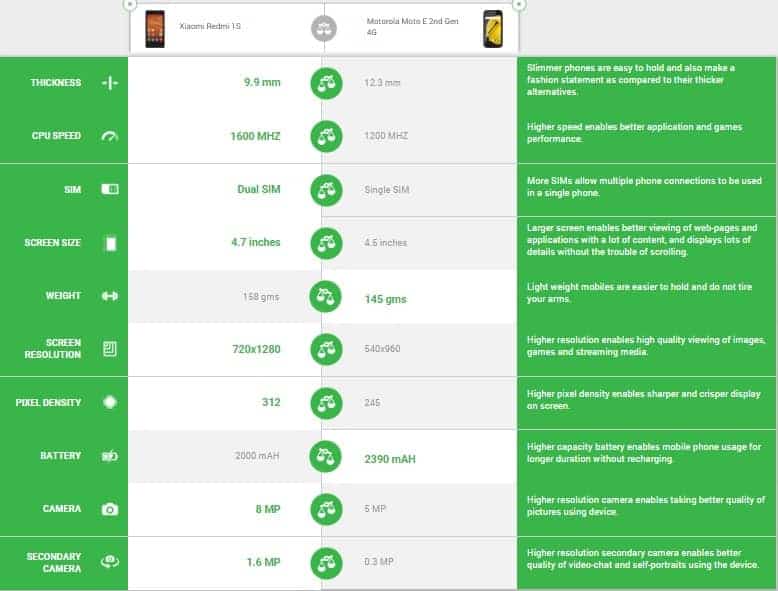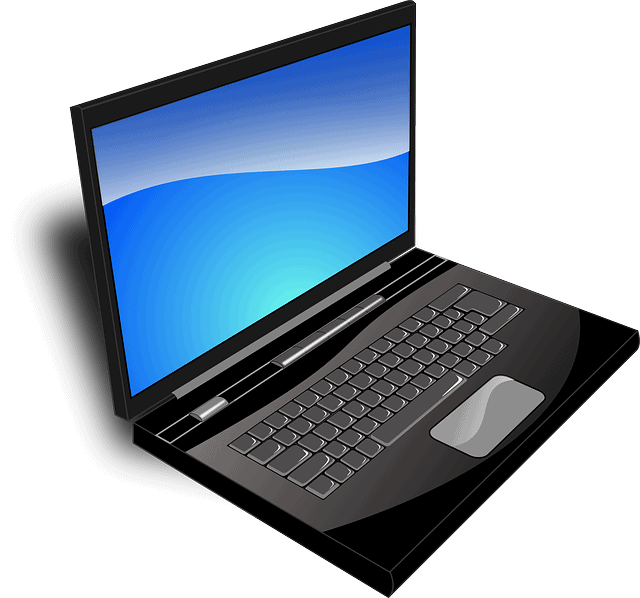While the race for the major market share in the Indian smartphone market is not new, there are a number of new players in the arena who have placed themselves in considerably powerful positions. One among them is Xiaomi. Quite popular for the development of low budget smartphones with hardware specs largely found in mobile devices at least twice its price tag, the Chinese manufacturer does not seem much concerned about advertising. Competing with it, for almost the same price range, is the Motorola Moto E 2nd Gen.
With Google as its backup, Motorola has been able to revolutionize the low budget smartphone segment successfully. The phone now comes with considerable hardware tweaks, ranging from blazing high-speed processors to an LTE option.

Design
Not really a gorgeous piece in its entirety, the Redmi 1S certainly is not a jewel for the eye. Neither is it the slimmest nor the most lightweight phone available in the segment. The same also stands true for the Motorola Moto E 2nd gen. However, given the price segment, they fall in, both make a pretty decent view. The Moto E features slightly curved corners and feels solid and well-built when held in the palm. The Redmi focuses more on simplicity, and it would not be an overstatement to say that Motorola takes the show when it comes to the design and hardware of these two devices.
Display
The Moto E features an IPS LCD 4.5 inch screen, with a resolution of 960×540, and a pixel density of 245 parts per inch. Although this does make the text on the screen clearly legible, it certainly does not qualify as the best among the two active devices. The Redmi 1S not only comes with an HD screen supporting a resolution of 1280×720 pixels but also offers Asahi Dragontrail protection for the screen, making it immune to accidental scratches from coins and keys while kept in the pocket. The high screen resolution makes the screen of your Xiaomi perfect for web browsing, reading content or watching multimedia.
Outdoor visibility of neither phones is excellent when compared to other highly priced cell phones on the market, but among the two, the Redmi again stands a step ahead.
Software
In terms of the interface, the Redmi 1S closely follows the trend set by Mi3. It runs MIUI on top of Android 4.3 (Jelly Bean). Quite different from the stock ROM of Android 4.3, the interface from Xiaomi offers a lot of fresh screen space for users who have always used devices from Samsung, HTC and Sony. The elegant and organized look of the MIUI certainly adds more charm to your phone than the original version of Android originally would. On the other hand, the Moto E 2nd gen runs the latest version of Android 5.0.2 straight out of the box. While this could mean getting closer to the latest the Android software has to offer, it must also be kept in mind that Moto E’s interface closely resembles the experience stock Android ROMs offer.
Camera
The Moto E 2nd gen comes with a 5MP camera placed at its rear end, which is just the same as its predecessor. Equipped with the Samsung’s CMOS sensor for its main camera, this version of Moto E uses the same one as has been employed in HTC One (M8). The images are relatively clearer, and the phone takes the considerably lesser time to process photos. Additionally, autofocus is an extra feature that is added in the main camera of the phone. The phone, for the first time in its series, also features a front-facing camera. Although only a VGA, it seems to be a start for this series.
The Redmi features an 8MP main camera and 1.6MP front unit for the selfie lovers. The 8MP camera also takes pretty decent pictures, but the phone consumes a considerable amount of time processing final images. The LED flash also appears to be capable of significant performance, and although the front facing camera is only 1.6, one may expect decent images out of it. However, getting it to work in the same way during low light conditions might prove to be a challenge.
System Performance
The Redmi 1S comes preloaded with a 1.6GHz chipset (quad-core Snapdragon) combined with a GB of RAM to enable smooth functioning of the inbuilt apps. Also, with 8GB internal storage, not much can be loaded on the phone. However, the 32GB expandable memory comes as a savior. The phone tends to heat through during excessive gameplay, and we concluded that underclocking of the chipset could be the cause although this has also helped in giving the phone a balanced execution.
Regarding performance, the 2nd gen Moto E is very similar in performance to the Moto G (2nd gen). However, there’s a slight difference in performance, and the Moto E 2nd gen emerges the winner, thanks to the new Cortex A53 CPU. The phone, when made to undergo rigorous comparison testing, seemed to function better than most of the phones in the segment.

Battery
The Motorola E 2nd gen offers a 2390mAh battery, thus allowing the device to run through significantly longer than Moto G, and way longer than the Redmi 1S. In fact, the battery is one of the aspects that the Redmi miserably fails in when compared to Motorola’s offering.
Conclusion
While the Redmi seems to give users value of their money, there are a few ways in which Motorola E 2nd gen considerably outruns its competitor, offering a combination of a brand name, superior specs and an economical battery life. The Xiaomi Redmi 1s vs Motorola Moto E 2nd Gen comparison above is meant to give you a clear picture of the differences between the two devices. If you have anything that we might have missed, feel free to leave us a comment.





